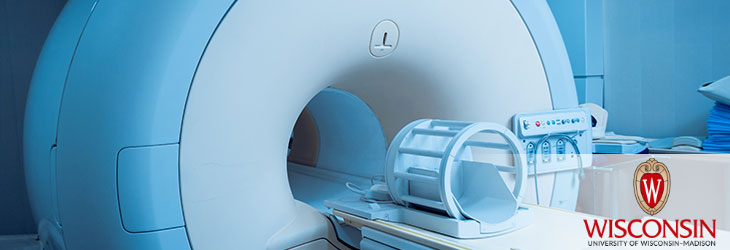Radiation Therapy

Radiofrequency Ablation System Using Multiple-Prong Probes
WARF: P04024US
Inventors: Fred Lee, Dieter Haemmerich, Lisa Sampson, Thomas Winter
The Wisconsin Alumni Research Foundation (WARF) is seeking commercial partners interested in developing an RF ablation system that provides the benefits of multiple probe ablation within a single multi-prong probe.
Overview
Radiofrequency (RF) tumor ablation involves passing an electrical current from a probe inserted into the tumor to a ground pad situated on the patient’s skin. The current destroys tumor cells by heating them, resulting in thermal lesions within the tumor.
RF ablation originally was performed by inserting and removing a single probe at a series of locations along the tumor -- a long and time-consuming process for destroying all but the smallest of tumors. To address this issue, UW-Madison researchers previously developed a new method of RF ablation that involves operating multiple monopolar or bipolar probes simultaneously and rapidly switching power between them (see WARF reference number P01339US). This technology improves the speed and effectiveness of RF ablation by targeting larger amounts of tissue with each placement of the electrodes.
RF ablation originally was performed by inserting and removing a single probe at a series of locations along the tumor -- a long and time-consuming process for destroying all but the smallest of tumors. To address this issue, UW-Madison researchers previously developed a new method of RF ablation that involves operating multiple monopolar or bipolar probes simultaneously and rapidly switching power between them (see WARF reference number P01339US). This technology improves the speed and effectiveness of RF ablation by targeting larger amounts of tissue with each placement of the electrodes.
The Invention
The researchers have now described an RF ablation system that provides the benefits of multiple probe ablation within a single multi-prong probe. The system includes a multi-pronged probe device that allows both monopolar and bipolar RF ablation from the prongs of a single probe. For efficient ablation, the prongs are electrically isolated from each other. Current can be rapidly switched between the prongs (in monopolar or bipolar mode), between a prong and a ground pad, or both.
Applications
- RF ablation for the treatment of liver and other tumors
Key Benefits
- Creates thermal lesions more rapidly and with larger mean diameter than previous methods
- Offers better control over the creation of lesions than previous methods
- Efficiently controls power distribution to a tumor without changing probe geometry
Additional Information
For More Information About the Inventors
Related Technologies
Tech Fields
For current licensing status, please contact Jeanine Burmania at [javascript protected email address] or 608-960-9846